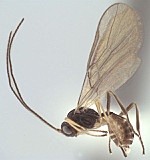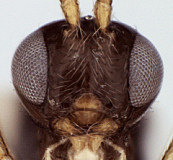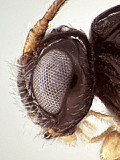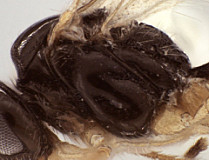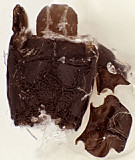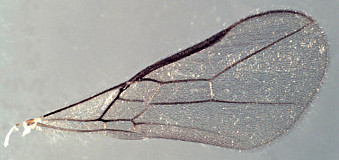Eurytenes ormenus Walker and Wharton, 2011
Eurytenes ormenus is a small-bodied species similar in size to E. microsomus but with a more heavily sculptured propodeum and darker hind femur. Eurytenes ormenus is characterized by the long, narrow petiole, similar in form to the petiole of E. pachycephalus and E. abnormis and unlike the broader petiole of E. pachycephalus is a much larger species with a distinctly broader gena. The anterior tentorial pits of E. ormenus are slightly larger in this species than in these other species.
There are no specimens currently determined for this OTU, or those specimens determined for this OTU are not yet mappable.
Paratypes:
1 ♀, same data as holotype except collected by Woolley and Zolnerowich;
1 ♀, Guerrero, 7 mi SW Filo de Caballo, 12.vii.1985, J. Woolley and G. Zolnerowich.
This material is based upon work supported by the National Science Foundation under Grant Number DEB 0328922 and associated REU supplement 1026618.
Any opinions, findings, and conclusions or recommendations expressed in this material are those of the author(s) and do not necessarily reflect the views of the National Science Foundation.

